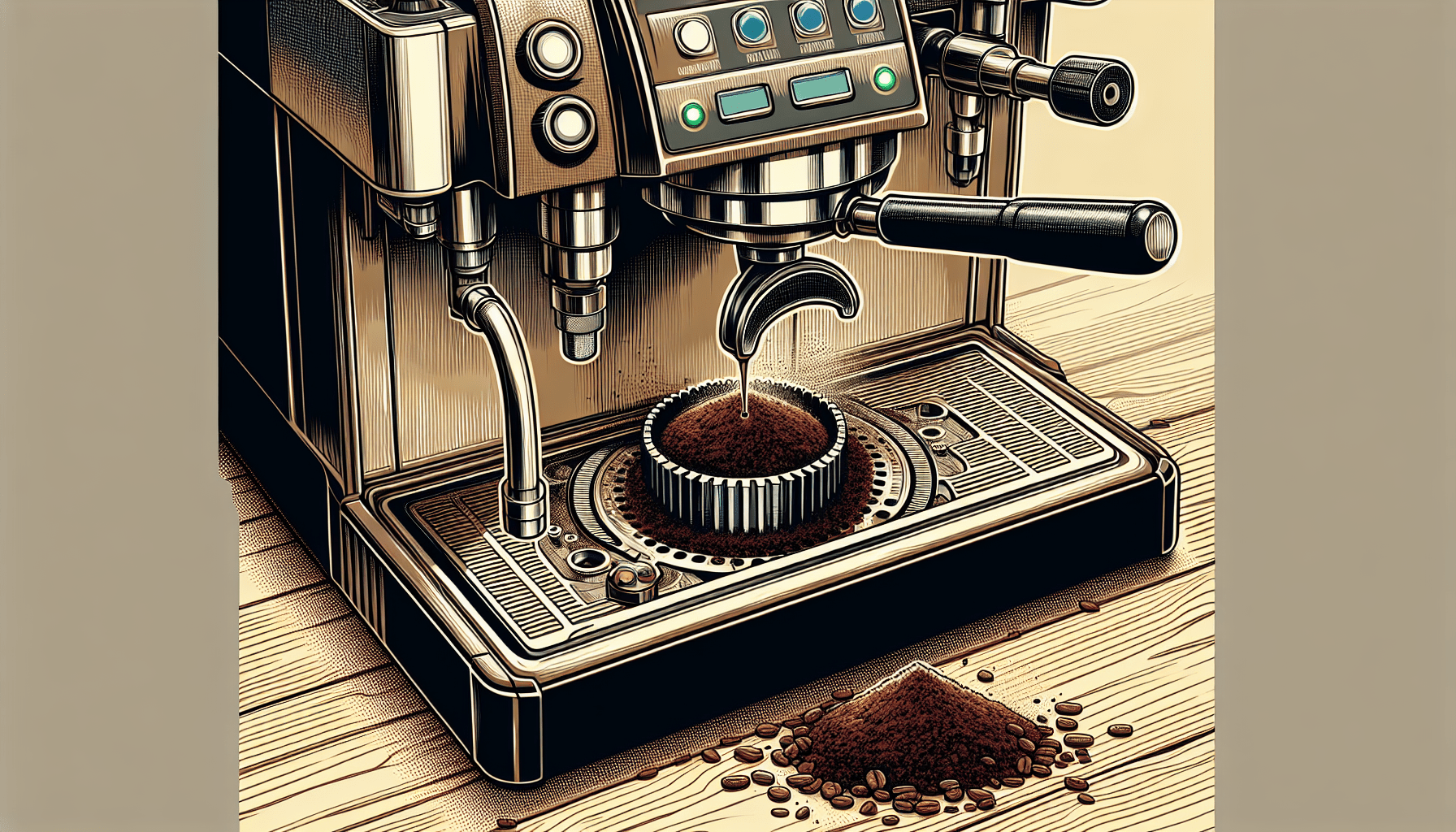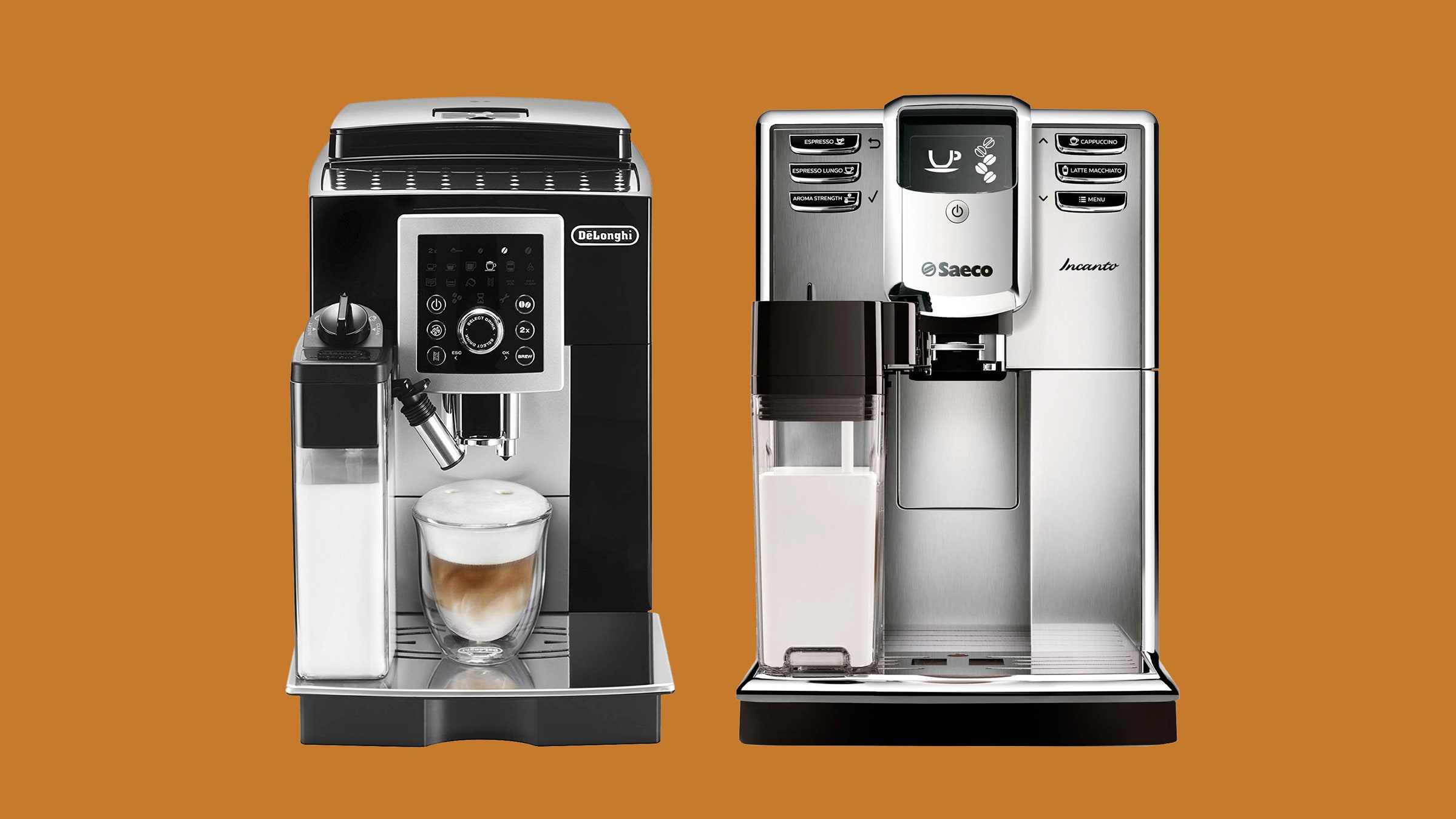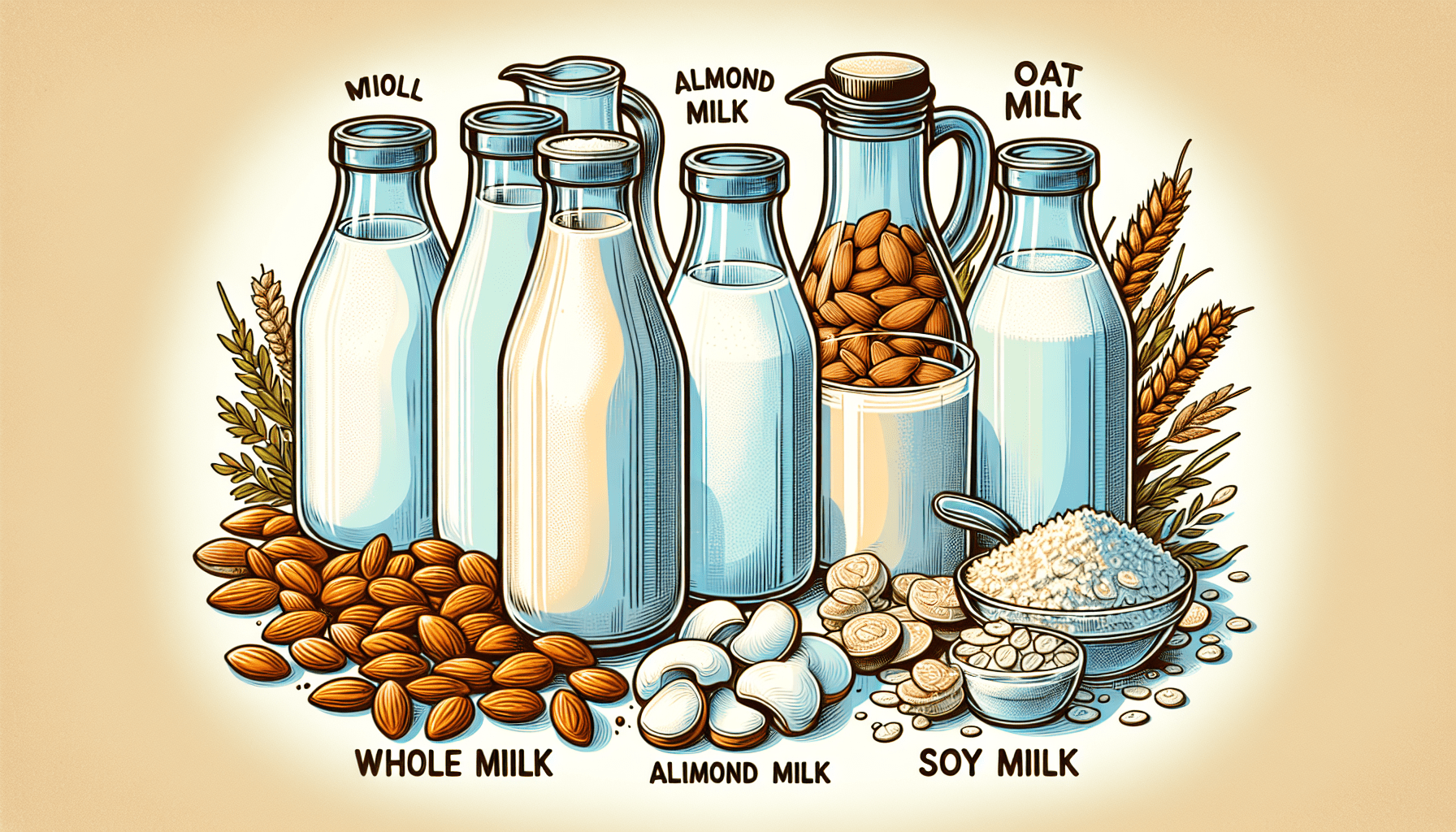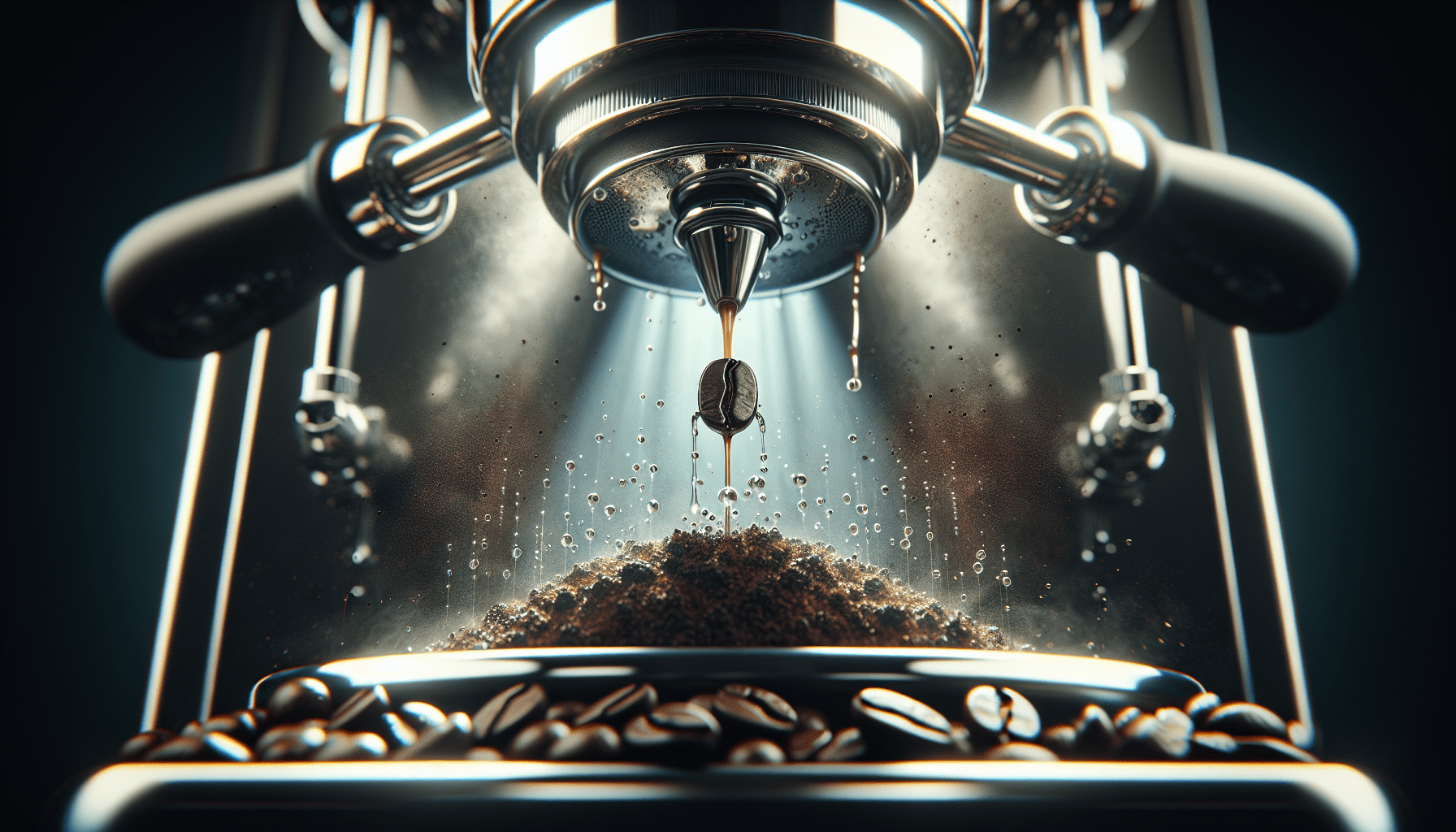Welcome to the world of super-automatic espresso machines! If you’ve ever wondered how these futuristic devices handle the mess and waste associated with brewing your morning cup of joe, look no further. In this article, we’ll take a closer look at how super-automatic espresso machines efficiently manage coffee grounds and waste disposal, making your coffee experience as easy and enjoyable as possible. So sit back, relax, and let’s dive into the fascinating world of coffee brewing technology! How Does The Super-automatic Espresso Machine Handle Coffee Grounds And Waste Disposal?
Have you ever wondered how a super-automatic espresso machine handles the disposal of coffee grounds and waste? Let’s delve into the specifics of this process so you can better understand how your favorite coffee maker operates efficiently and cleanly.
Importance of Proper Waste Disposal in Super-automatic Espresso Machines
When it comes to brewing espresso, the quality of the coffee grounds and proper waste disposal play a vital role in determining the taste and overall experience of the coffee. Super-automatic espresso machines are designed to automate the brewing process, making it convenient for users to enjoy freshly brewed coffee with minimal effort. However, the proper handling of coffee grounds and waste disposal is crucial to maintaining the cleanliness and efficiency of these machines.
Impact on Taste and Quality of Espresso
The quality of the coffee grounds used in brewing espresso directly impacts the taste and overall quality of the coffee. Freshly ground coffee beans produce a richer and more flavorful espresso compared to pre-ground coffee. Improper disposal of used coffee grounds can contaminate the new batch of coffee, resulting in a bitter or off-flavor taste.
Machine Efficiency and Longevity
Proper waste disposal is essential for maintaining the efficiency and longevity of your super-automatic espresso machine. Accumulated coffee grounds and waste can clog the internal components of the machine, leading to reduced performance and potential breakdowns. Regular cleaning and disposal of waste ensure that your machine operates smoothly and lasts longer.
Handling Coffee Grounds in Super-automatic Espresso Machines
Super-automatic espresso machines come equipped with various mechanisms for handling coffee grounds during the brewing process. Understanding how these machines handle coffee grounds can help you maintain the cleanliness and effectiveness of your espresso maker.
Grinding Fresh Coffee Beans
One of the key features of super-automatic espresso machines is their ability to grind fresh coffee beans on demand. This ensures that you always have freshly ground coffee for brewing espresso, maximizing the flavor and aroma of the final product. The grinding process is automated, with the machine adjusting the grind size and dose according to your preferences.
Extraction and Brewing Process
After grinding the coffee beans, the super-automatic espresso machine proceeds to extract the espresso. The brewed coffee passes through the coffee grounds, extracting the flavors and aromas to create a rich and flavorful espresso. The extraction process is carefully controlled by the machine to achieve the optimal balance of flavors and characteristics.
Ejecting Used Coffee Pucks
Once the brewing process is complete, the super-automatic espresso machine ejects the used coffee grounds in the form of a compacted puck. This puck consists of the spent coffee grounds that have been extracted of their flavor and aroma during the brewing process. The machine automatically discards the puck into a designated container for waste disposal.
Waste Disposal Mechanisms in Super-automatic Espresso Machines
Super-automatic espresso machines are designed with specific waste disposal mechanisms to ensure proper handling of used coffee grounds and waste. These mechanisms vary depending on the model and manufacturer of the espresso machine but generally serve the same purpose of keeping the machine clean and efficient.
Internal Waste Bin
Most super-automatic espresso machines come equipped with an internal waste bin that collects the used coffee grounds and waste generated during the brewing process. This bin is typically located within the machine’s brewing unit or drip tray, making it easy to access and empty when necessary. The bin is designed to prevent spillage and contamination of the machine’s other components.
Drip Tray and Waste Drawer
In addition to the internal waste bin, super-automatic espresso machines often feature a drip tray and waste drawer for collecting excess coffee waste and liquids. The drip tray catches any spilled coffee or water during the brewing process, while the waste drawer stores the used coffee pucks ejected by the machine. These components are removable for easy cleaning and disposal of waste.
Automatic Cleaning Programs
Some super-automatic espresso machines are equipped with automatic cleaning programs that help maintain the cleanliness of the machine and ensure proper waste disposal. These programs automatically rinse, descale, and clean the internal components of the machine, including the waste bin, brewing unit, and drip tray. Regular use of these cleaning programs can prevent clogs and extend the life of your espresso maker.
Proper Waste Management Tips for Super-automatic Espresso Machines
To ensure the longevity and efficiency of your super-automatic espresso machine, it is essential to practice proper waste management techniques. These tips will help you maintain the cleanliness and functionality of your espresso maker while enjoying delicious coffee every time.
Empty the Waste Bin Regularly
Make it a habit to empty the waste bin of your super-automatic espresso machine regularly, especially after brewing multiple cups of espresso. Leaving used coffee grounds in the waste bin can lead to mold growth, odors, and contamination of the machine’s internal components. Dispose of the waste in a compost bin or designated trash receptacle for proper disposal.
Clean the Drip Tray and Waste Drawer
In addition to emptying the waste bin, clean the drip tray and waste drawer of your espresso machine to prevent the buildup of coffee waste and residues. Remove and wash these components with warm, soapy water to remove any lingering coffee grounds or spills. Allow the components to dry completely before reassembling them in the machine.
Use Fresh Coffee Beans
To maintain the quality and taste of your espresso, use fresh coffee beans for brewing instead of pre-ground coffee. Super-automatic espresso machines are designed to grind fresh coffee beans on demand, ensuring that you always have the freshest coffee for brewing. This enhances the flavor and aroma of your espresso while minimizing waste from pre-packaged coffee.
Follow Manufacturer’s Cleaning Instructions
Refer to the user manual of your super-automatic espresso machine for specific cleaning instructions provided by the manufacturer. Follow these instructions carefully to maintain the cleanliness and efficiency of your machine. Regular cleaning and maintenance will extend the life of your espresso maker and ensure consistent brewing performance.
Conclusion
In conclusion, the proper handling of coffee grounds and waste disposal is essential for maintaining the cleanliness and efficiency of super-automatic espresso machines. Understanding how these machines handle coffee grounds and waste can help users maintain the quality and taste of their espresso while prolonging the life of their espresso maker. By following proper waste management tips and cleaning techniques, coffee lovers can enjoy delicious coffee brewed by their favorite super-automatic espresso machine for years to come. Cheers to a fresh cup of espresso every day!




